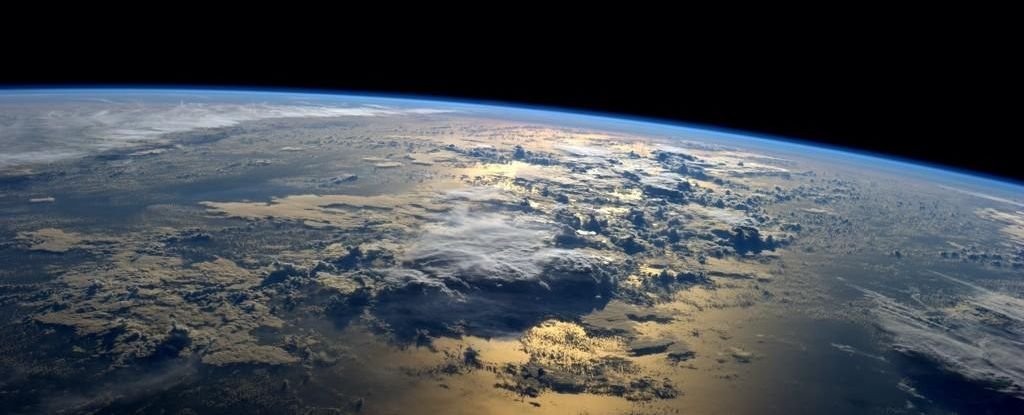We don't know how life emerged on Earth, but one thing is certain: life as we know it on our planet wouldn't exist without the water that wraps around the surface, runs in rivulets, and falls from the sky.
Our planet is the only one known to have life, and the only one on which liquid water can be found in abundance (moons are another story). There are giant question marks over where and how it came from, but new research suggests that it was here in the Solar System before Earth even formed.
According to a team led by geochemist Jérôme Aléon of the French National Museum of Natural History, isotopes of water in a meteorite from the birth of the Solar System match isotopes of water found on Earth today.
"The initial isotopic composition of water in the Solar System is of paramount importance to understanding the origin of water on planetary bodies but remains unknown, despite numerous studies," the researchers write in their paper.
"Here we use the isotopic composition of hydrogen in calcium-aluminium-rich inclusions (CAIs) from primitive meteorites, the oldest Solar System rocks, to establish the hydrogen isotopic composition of water at the onset of Solar System formation."
Certain types of meteorites can act as time capsules from the birth of the Solar System. A star is born from a cloud of gas and dust that collapses under its own gravity, known as the collapse of the protostellar envelope.
Meanwhile, material in the cloud around it flattens into a disk that feeds into the growing, spinning star. Once it has finished growing, what's left of that cloud forms everything else in that star's system – planets, asteroids, comets, and so forth.
Many of these things are even older than Earth; radiometric dating suggests Earth formed 4.54 billion years ago. And, by sheer luck, some of these rocks land right here on our doorsteps.
The whole accretion process usually heats and squeezes those primordial materials into forms that erase traces of its origins. This has made analysis of its water content a challenge.
Yet there are occasional rock samples that make it to Earth's surface that display few signs of overbaking, providing researchers with a prime opportunity.
The Efremovka meteorite, found in Kazakhstan in 1962, has elements that have been dated back to 4.57 billion years ago. It was this meteorite, and its ancient inclusions rich in calcium and aluminium, that Aléon and colleagues analyzed, using a new technique developed just for this purpose.
To measure the water content of the meteorite, they used focused ion beam imaging to identify and probe all the minerals in their sample,
comparing the results with eight terrestrial reference materials with a wide range of water content. Then, they examined the ratio of the isotopes of hydrogen in the meteorite.
These ratios, fascinatingly, can be used to identify the signature of water. Isotopes are variants of an element with different numbers of neutrons; deuterium – also known as heavy hydrogen – has one proton and one neutron. Protium, or light hydrogen, has one proton and no neutrons.
Because hydrogen is one of the components of water, the ratio of these two isotopes in rocks can tell us about the water that rock was exposed to. For example, protium is the dominant hydrogen isotope here on Earth. On Mars, deuterium is the dominant isotope, which tells us that something might be stripping the lighter protium.
The minerals and ratios in the Efremovka meteorite revealed that, in the first 200,000 years of our Solar System's history, before the planetesimals (that's planet seeds) formed, two large gas reservoirs existed. One of these reservoirs contained the solar gas from which the matter in the Solar System ended up condensing.
The other, the team found, was rich in water. This water probably came from a massive influx of interstellar material that fell in towards the inner Solar System at the time of the protostellar envelope collapse.
And, fascinatingly, that water is very similar to Earth's water in its isotopic composition. This suggests that water was present in the early Solar System from its very inception – before Earth was even a twinkle in the protoplanetary disk.
"The ubiquitous hydrogen isotopic composition observed in large, early-formed telluric planetesimals … was reached in the first few 100,000 years of the Solar System owing to a massive influx of interstellar matter infalling directly in the inner Solar System, rather than being produced in a more evolved protoplanetary disk," the researchers write.
The research has been published in Nature Astronomy.
- Mutton and Karlston
-

 2
2



Recommended Comments
There are no comments to display.
Join the conversation
You can post now and register later. If you have an account, sign in now to post with your account.
Note: Your post will require moderator approval before it will be visible.